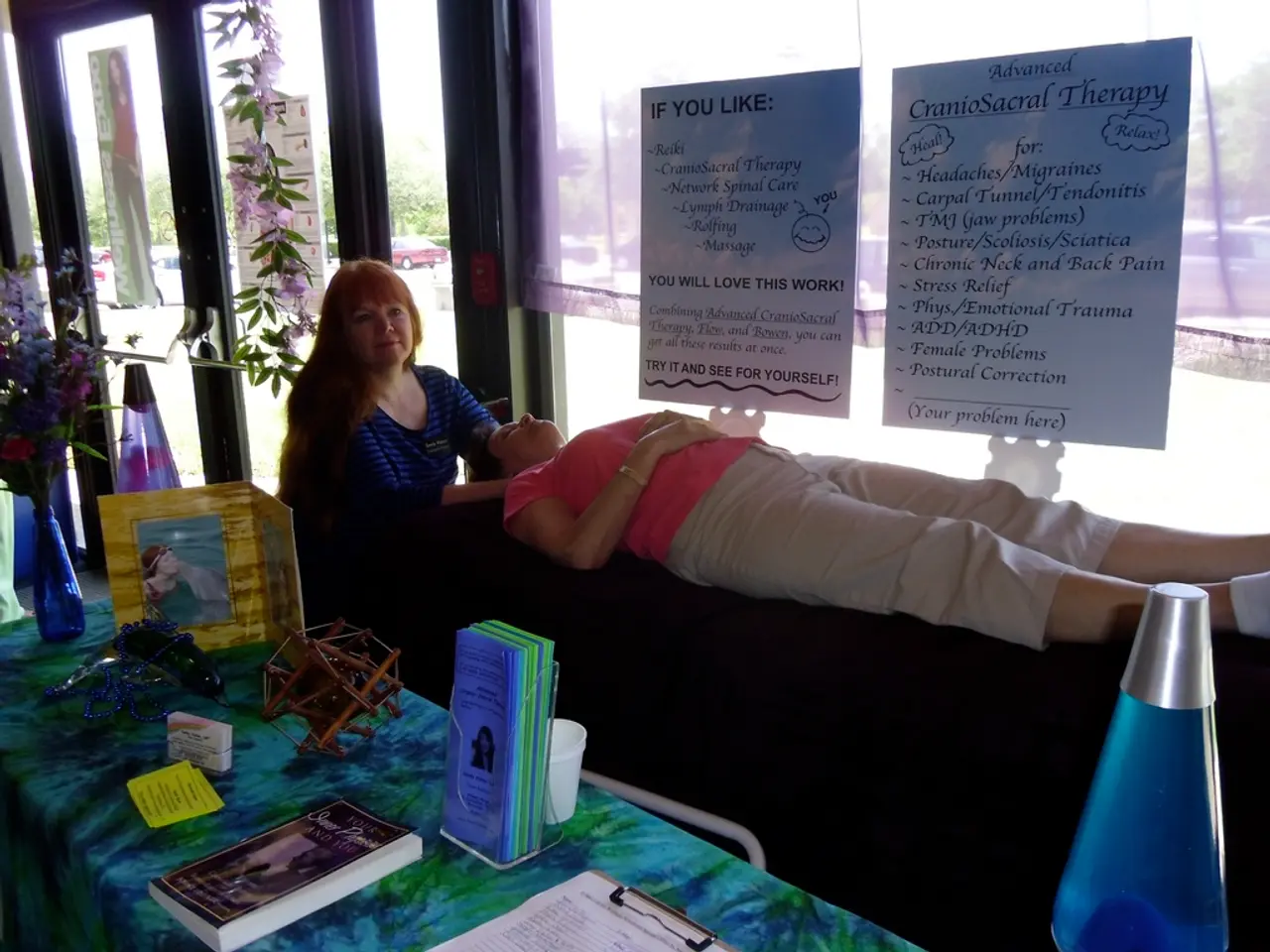Vaginal Discomfort: Root Causes, Manifestations, and Remedies
Chronic vaginal pain can be a distressing and uncomfortable condition, affecting many individuals, particularly those who are sexually active. This article explores the various treatments available for managing chronic vaginal pain, including conditions such as vulvodynia and persistent pelvic pain.
Chronic vaginal pain treatment is tailored to the individual, taking into account the underlying cause, patient-specific factors, and response to initial therapies. A multidisciplinary approach is often employed, combining medicinal, physical, surgical, and psychological approaches to optimise outcomes.
**Medicinal treatments** include topical compounded creams containing gabapentin, amitriptyline, and baclofen, which have shown significant improvement in about 70% of vulvodynia patients within six months. Antibiotics or antifungal medications are used when infections such as bacterial vaginosis or yeast infections contribute to the pain. Opioids are generally not recommended for chronic pelvic pain as they may worsen pain and create dependency.
**Physical therapies** play a significant role in managing persistent pelvic pain. Techniques include pelvic floor muscle relaxation, massage, stretching, and dry needling. Vaginal dilators or plastic expanders are used to stretch and relax vaginal tissues. Touch desensitisation and lubrication are employed to reduce pain during intercourse. Spinal mobilisations and TENS (transcutaneous electrical nerve stimulation) are also used for pain relief.
**Surgical intervention** can be a last resort for localized pain at the vaginal opening, with success rates between 60% and 90%.
**Innovative treatments** like the MonaLisa Touch CO2 fractional laser therapy are promising new options. This quick, outpatient procedure regenerates vaginal tissue, improves elasticity, and restores blood flow, with minimal discomfort and minor temporary side effects.
**Psychological and complementary therapies** also play a role. Cognitive behavioural therapy (CBT) with psychologists, sex therapy, dietitians, and naturopaths may provide valuable support.
The determination of treatment depends heavily on identifying the cause of the pain, whether it be infections, nerve dysfunction, pelvic floor muscle dysfunction, or other pelvic disorders. The pain's localization and severity, patient response and preference, presence of comorbid conditions, and multidisciplinary care availability are also crucial factors.
It is essential for anyone experiencing vaginal pain to seek help from a healthcare professional for diagnosis and treatment. Vaginal prolapse, caused by pregnancy, childbirth, aging, obesity, and injury to the muscles and tissues that support the pelvic organs, can also lead to vaginal pain.
Strategies for preventing some forms of vaginal pain include using a condom during sex, undergoing regular STI testing, changing out of wet or sweaty clothes, wearing cotton underwear, and avoiding scented products in the genital area.
In conclusion, chronic vaginal pain treatment is a complex and personalised process, requiring a collaborative effort between healthcare professionals and patients. The newest options like laser therapy add promising tools to this multifaceted management.
- Chronic vaginal pain, particularly in sexually active individuals, can be addressed through a tailored treatment approach that considers the cause, individual factors, and response to initial therapies.
- Medicinal treatments for chronic vaginal pain may involve topical compounded creams containing gabapentin, amitriptyline, and baclofen, antibiotics for infections like bacterial vaginosis, and antifungal medications for yeast infections.
- Physical therapies such as pelvic floor muscle relaxation, massage, stretching, dry needling, vaginal dilators, touch desensitisation, lubrication, spinal mobilisations, and TENS (transcutaneous electrical nerve stimulation) can be beneficial.
- Surgical intervention may be considered for localized pain at the vaginal opening, with success rates ranging between 60% and 90%.
- Innovative treatments like the MonaLisa Touch CO2 fractional laser therapy could emerge as promising new options, regenerating vaginal tissue, improving elasticity, and restoring blood flow.
- Psychological and complementary therapies like cognitive behavioural therapy (CBT), sex therapy, dietitians, naturopaths, and other support services can also play a significant role.
- The cause of the pain, whether it be infections, nerve dysfunction, pelvic floor muscle dysfunction, or other pelvic disorders, is crucial in determining the appropriate treatment.
- Vaginal prolapse, caused by pregnancy, childbirth, aging, obesity, and injury to the muscles and tissues that support the pelvic organs, can lead to vaginal pain.
- Preventative strategies for some forms of vaginal pain include using a condom during sex, regular STI testing, changing out of wet or sweaty clothes, wearing cotton underwear, and avoiding scented products in the genital area.
- Healthcare professionals should be consulted for diagnosis and treatment of any vaginal pain, as conditions like COPD, diabetes, psoriatic arthritis, multiple sclerosis, obesity, HIV, depression, vaginal health issues (such as eczema, dermatitis, fungal infections of female origin), and other comorbid conditions may need to be taken into account during treatment.
- Women's health advertisements and articles on health-and-wellness platforms should aim to educate the public on chronic vaginal pain, its causes, treatments, and preventative measures.
- ADs featuring scientists working on predictive models for vaginal pain could help improve our understanding of this condition and develop more effective treatments in the future.*TYPE A science-based approach to understanding chronic vaginal pain could lead to more effective treatments and improved women's health.




